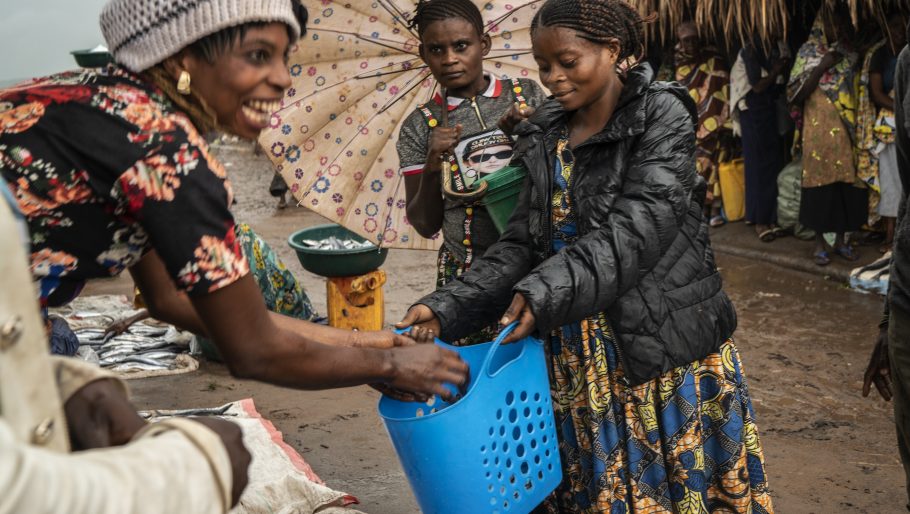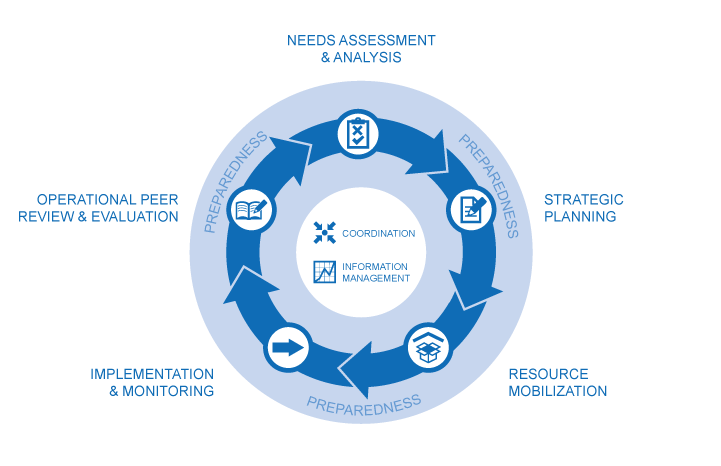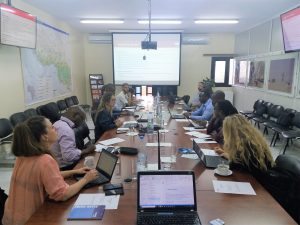Eight top tips for the 2023 humanitarian planning season
As disasters spiral globally and inflation increasing vulnerability for millions more, effective humanitarian planning has never been so important. But where to start? The CALP Network offers its top tips for humanitarians, ranging from CVA practitioners to leadership.

We know the annual humanitarian response planning (HRP) process – which outlines the humanitarian community’s plans and funding requirements for each response – doesn’t get many people jumping out of their seats with excitement. But as disasters spiral in the Horn of Africa, Afghanistan, Pakistan and Ukraine and with the effects of climate change and global inflation pushing increasing vulnerability for millions more, effective humanitarian planning has rarely been so important.
We also know that affected populations usually prefer to receive CVA (over other types of assistance) and is an effective and cost-efficient way of meeting people’s needs in a more dignified manner. So that’s why it’s essential that CVA is a strong part of the HRP.

Response plans need you to be involved
Now that CVA makes up about 20% of international humanitarian assistance – and up to one third or more in crises like Somalia and Ukraine – CVA actors need to be consistently involved in developing comprehensive response plans.
The annual HRP process, which has recently kicked off, is THE mechanism for national and international humanitarian actors to come together to decide on response priorities and design, including possible linkages to social protection systems; how plans will be monitored and reported; and most importantly, how the stakeholders will be accountable to the affected population, host governments and those funding the response.
We all know the HRP process can feel heavy, but it is a key opportunity to influence the response design. The process mobilises practitioners and done well, creates important discussions. The end product provides visibility – across the response and beyond – on the state of CVA programming as well as raising much needed funds for the response.
Cash and voucher assistance in humanitarian response plans is changing
Evolution in HRPs
- Last year, 21 out 27 HRPs used the cash chapter, but only 10 of the response plans* accurately reflected the use of Multi-Purpose Cash (MPC), with the remaining 11 countries providing general information on CVA. In some cases context-specific limitations may prevent providing a high level of detail, e.g. in Venezuela, where national authorities have restricted the use of CVA. But that’s not the case for all – so there’s an opportunity to do better going forward.
- Early analysis of this year’s HRPs shows that half would like to increase the use of CVA in the humanitarian response, while the other half are decreasing CVA. In most cases the reductions in CVA are very small, but there are some significant decreases e.g. in in Sudan (16%) due to concerns with CVA delivery post-coup and in Nigeria (22%) for unspecified reasons, which require further contextual analysis.
- At times, there have been efforts to move unrestricted cash under the food security sector, such as in the Democratic Republic of Congo, Haiti and Ukraine. This has happened in the past in Iraq, where MPC was moved under the Protection sector. Sectorisation of cash is entirely contrary to its premise and added value, which is to shift decision-making to recipients to determine their own priorities – which tend not to neatly align with humanitarian sectors.
The way forward
Here are our eight top tips for stakeholders engaging in the planning process:
For Cash Working Group (CWG) chairs:
-

Cash Working Groups can play a crucial part in designing assistance that responds to the preferences and needs of affected populations. Lead the process and at the same time, ensure the discussions are not process-led. Engage people to develop collective goals to address humanitarian needs as effectively as possible, rather than bombard them with templates. Leadership is essential in such processes which, if not managed correctly, can lend themselves more to bureaucracy than action.
- Prioritise response analysis and feasibility by harnessing the existing data and analysis of CVA partners to develop a common understanding of community preferences, market functionality and the availability of FSP delivery mechanisms.
For organisations implementing CVA:
- A single programmatic approach across a country is rarely appropriate. Share your assessments and analysis to ensure a comprehensive understanding of cash feasibility across the context.
- Share your planned activities, targets and any outcome indicators and results with the CWG, as well as through the appropriate reporting processes, including the HRP Projects Module and Financial Tracking Service.
- If you’re not aware of the response planning process, ask the national CWG chair if you can support (CWG chair directory can be found here.)
For Humanitarian Country Teams and donors:
- Strengthen response planning, particularly in protracted emergency contexts, to ensure that cash is actively considered and opportunities to deliver better and more efficiently are seized. Too often there is path dependency – we continue to do what has been done before without exploring other options.
- Ensure that cash is reflected appropriately in the HRP. If in doubt, put yourselves in the shoes of the recipients you are aiming to serve to determine what modality would make most sense.
- Ensure linkages to social protection – in its variety of different forms – are thoroughly considered and linkages created where appropriate. If nothing else, this process will help strengthen the dialogue and enable relationship building with government counterparts.
As humanitarian resources are stretched across an ever-growing number of emergencies, exacerbated by global inflation and climate change, we must do better.
The humanitarian community needs to live up to its commitment to designing assistance that responds to the preferences and needs of affected populations and we know from countless studies that cash is very often the preferred modality of assistance.
The HRP process is the best – and currently only – opportunity in the formal humanitarian system for us to strengthen inter-agency efforts, no matter how challenging.
*Burkina Faso, Cameroon, DRC, Iraq, Libya, Mali, Pakistan, Somalia, Ukraine and Yemen.
In the image: Kisimba buys fish from a local market in Tundwa, Democratic Republic of Congo. Kisimba’s family fled conflict and sought refuge in a town called Kalemie. When they returned, they found that everything they had left behind was gone. Life was a daily struggle. Then Kisimba was identified as returnee and started receiving cash assistance from WFP. Today, Kisimba’s family has made a new start and is enjoying a more stable life. The family has invested in livestock and been able to cultivate their fields. Credit: WFP/Arete/Fredrik Lerneryd. February 2021.


